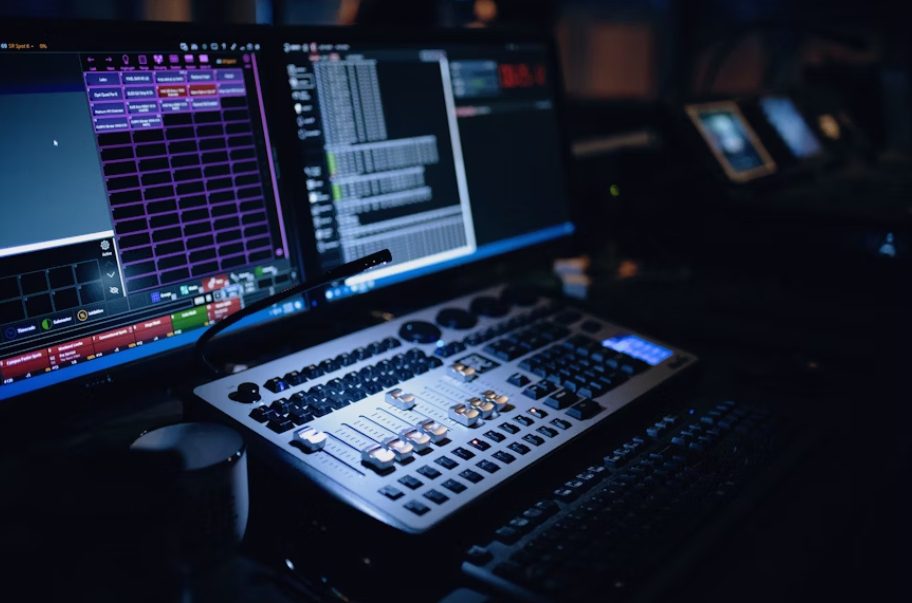Ever wonder what it takes to make a successful broadcasting setup?
The broadcasting industry is currently booming. Analysts predict the broadcasting and cable tv market will reach $449.91 billion by 2030, growing at an annual rate of 4%.
However…
Many studios are still using outdated equipment that is holding them back.
To keep up with market demand, studios need to invest in the right broadcasting equipment and technology that can scale with their needs. The good news is modern broadcasting solutions make it easier than ever before to produce and deliver professional content at a lower cost.
In this guide, you will learn
- Why Modern Broadcasting Equipment Matters
- Key Technologies Transforming Studios Today
- How To Choose The Right Broadcasting Setup
- Future-Proofing Your Investment
Why Traditional Broadcasting Equipment No Longer Cuts It
Here’s something most studio owners don’t realize…
The way people consume content has changed. Audiences expect studio quality 4k, zero latency, and the ability to watch on any platform or device they want. Your broadcasting equipment must be able to keep up with consumer demands or risk getting left behind.
Consider this: Over 90% of broadcasters have upgraded to HD, and it’s not a question of if, but when the next shift to occur. If you’re still using SD equipment, you’re essentially saying to your audience that quality is not important to you.
And that won’t work anymore.
The Broadcasting Tech Revolution Is Here
Here’s a peek at what’s currently happening in the industry…
Companies like Thor Broadcast are at the forefront of the equipment revolution, offering cutting edge broadcasting equipment designed for modern content creators. These innovative solutions combine the reliability of dedicated hardware with the flexibility of software, giving you the best of both worlds.
But what makes these modern broadcasting technologies so special? The answer is found in three key trends:
Cloud-Based Broadcasting
Cloud technology is revolutionizing the way studios work. With cloud based systems you can
- Stream to multiple platforms simultaneously
- Scale your infrastructure on demand
- Access your setup from anywhere
- Save money on hardware maintenance
The beauty of cloud based systems is that you’re not locked into expensive, physical infrastructure that will be obsolete in a few short years.
AI-Powered Automation
Now this one’s a game-changer…
Artificial intelligence in broadcasting is growing at a rate of 20% per year, and there’s good reason why. AI-Powered broadcasting equipment can automate tasks such as:
- Automated content recommendations
- Video quality optimization in real time
- Predictive maintenance alerts
- Smart scene detection and switching
Essentially, AI allows for less time on babysitting equipment and more time creating great content.
5G Network Integration
If you ask me, the best thing about 5G?
It’s enabling low-latency, high-speed streaming we never thought was possible. With 5G-enabled broadcasting equipment you can simultaneously stream to multiple devices without sacrificing quality.
This is huge for live events, sports broadcasting, news and current affairs.
Essential Broadcasting Equipment For Modern Studios
Before you start upgrading your equipment, you need to know what matters. Here’s what every future-proof studio should have in place:
Video Production Equipment
Cameras and switchers are the foundation of your broadcast. Choose equipment that supports 4K resolution, multiple output formats, remote control, and system integration. Don’t skimp here – quality video equipment will pay for itself in professional results.
Audio Solutions
Audio is where most studios fall down…
Audio quality can make or break a broadcast. Don’t neglect to invest in professional-grade microphones, digital audio mixers, quality monitoring, and acoustic treatment. Remember – viewers will forgive poor video before they forgive poor audio.
Streaming Infrastructure
This is where most studios make their biggest mistake…
Your streaming setup must be able to handle multiple outputs, formats, and platforms. Modern broadcasting equipment should include hardware or software encoders, multi-platform distribution tools, content delivery network (CDN) integration, and backup systems for redundancy. One failed stream can cost thousands in lost revenue and reputation.
How To Choose The Right Broadcasting Equipment
Here’s what you need to do…
The first step is assessing your needs. Are you producing daily news broadcasts, live events, pre-recorded shows, or something else entirely? Equipment requirements will vary significantly based on the content you are producing.
Next consider these critical factors:
Scalability: Can the equipment scale with your studio? Broadcasting tech changes quickly, so choose equipment that can be upgraded without replacing everything.
Integration: Is the equipment compatible with your existing systems? Integration issues can quickly bring production to a halt.
Support: What happens if something goes wrong at 2 AM before a major broadcast? Technical support is not optional, it’s a necessity.
Budget: Finally, consider the budget. Balance upfront costs against long term value. Cheap equipment that fails and requires constant maintenance will end up costing you more than premium gear that lasts.
The IPTV Revolution
Here’s some exciting news…
IPTV (Internet Protocol Television) is growing faster than any other segment, at a CAGR of 6.7%. It is not just a trend, it is the future of broadcasting.
IPTV broadcasting equipment can provide you with:
- On-demand content delivery
- Interactive features viewers actually want
- Multi-device compatibility out of the box
- Reduced infrastructure costs than traditional broadcast
If you are not ready for IPTV you are leaving major opportunities on the table.
Emerging Technologies To Watch
Here’s something most broadcasters don’t know yet…
Emerging technologies are going to soon start reshaping the broadcasting industry, and here are some of the most important breakthroughs to keep an eye on:
8K Broadcasting: 4k is the current standard, but 8k broadcasting equipment is now starting to become available. Studios that get in on the ground floor will have a major competitive advantage.
Virtual Production: LED walls and real-time rendering is coming to content creation. This will require specialized equipment, but offer complete creative freedom.
Edge Computing: Processing data at the edge, close to the source, can dramatically reduce latency and increase quality. Edge computing enabled equipment will become the standard.
Investing in these emerging technologies today will help position your studio to dominate in the future.
Making Your Investment Last
Here’s some final advice to make sure your broadcasting equipment investment lasts:
- Schedule regular maintenance and checks
- Keep firmware and software updated
- Train your team on any new equipment properly
- Build in redundancy for critical systems
- Document your setup for troubleshooting
The most expensive broadcasting equipment in the world won’t help you if it’s not being properly maintained.
Wrapping It All Together
The broadcasting industry is changing fast, and studios need to be prepared. Modern broadcasting equipment and tech solutions are offering capabilities that would have been impossible a few short years ago.
By investing in scalable, integrated broadcasting solutions now, studios can be set up for long-term success. The market is growing, the technology is available, and consumers have never had higher expectations.
Don’t get caught with outdated equipment that fails during a critical broadcast. Start planning your studio upgrade today. Your future viewers (and bottom line) will thank you.
The studios that are successful in the future will be the ones that invested in the right broadcasting equipment and technology today. Make sure your studio is one of them.





























